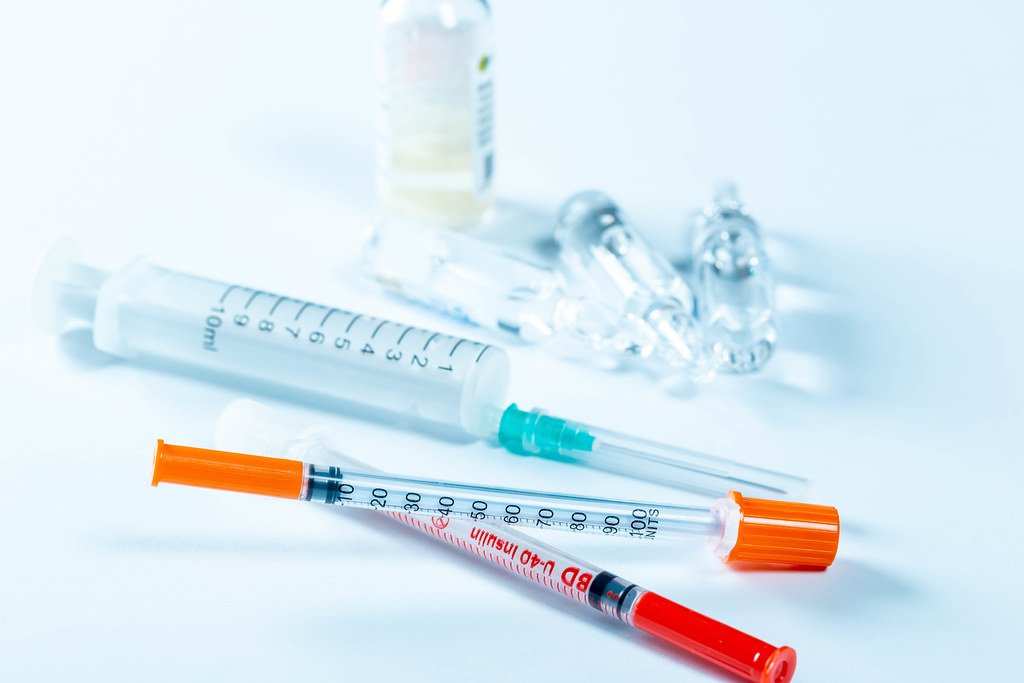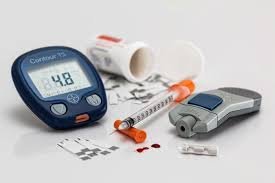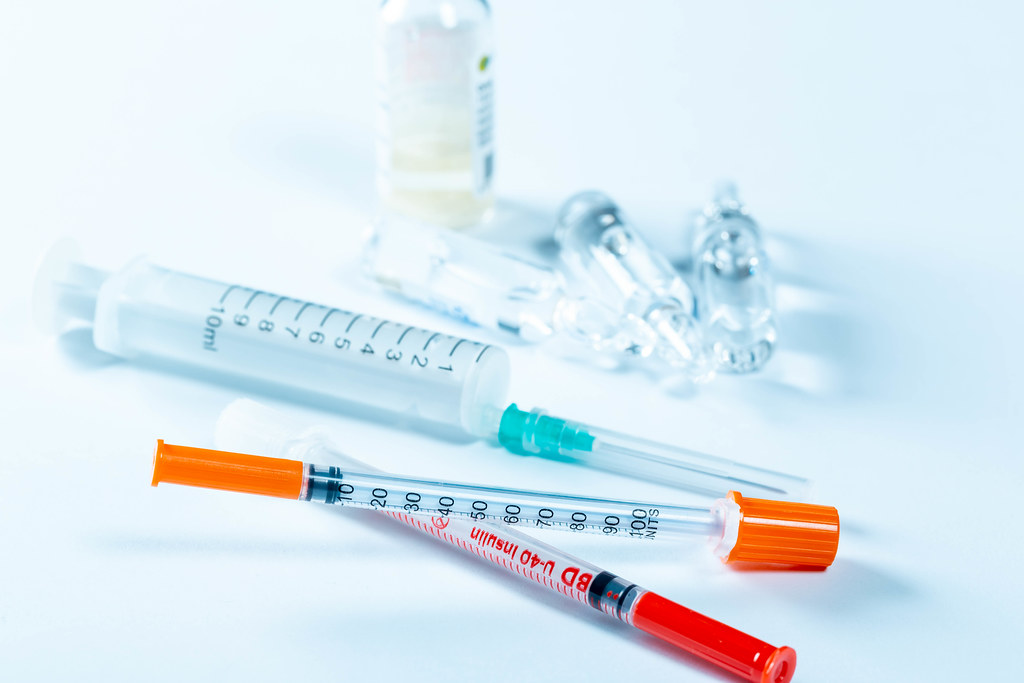Between the 20th and 26th of May, the Insulin Safety Week has been celebrated across the UK. This is the second year of the initiative, and it is estimated that around 545 sites chose to participate in the event this year.
The need for a whole week dedicated to Insulin Safety was highlighted by NADIA (National Diabetes Inpatient Audit) 2017. According to their data, a shocking 40% of insulin-treated patients have at least one insulin error during their hospital stay.
The numbers are even worse when you consider the possible devastating, and even lethal, consequences of an insulin error.
In my nursing career, I was always very wary and overcautious when handling insulin. First of all, it’s a hormone. It’s quite delicate, it has a complex effect on the patient. Administering this medication is also time critical.
Second, there are about 30 different kind of “insulin” currently in use in the UK. They are not all the same. Different insulins will have distinct actions, peak at different times and could last in your patient system for disparate lengths of time. Administering Novorapid will require a specific set of considerations that are quite different from the assessments that nurses have to perform if they administer Insulatard. They are both time-critical, but in a very different way.
Insulin mistakes could be lethal not only by overdose, but also by omission. Giving insulin at the wrong time will result in poorer blood glucose control, hypoglycaemia episodes, slow wound healing and increased length of stay in hospital. Omitting, on the other side, could easily lead to DKA (Diabetes Keto-Acidosis), a life-threatening emergency. Therefore, insulin is a drug that requires to be handled with a good level of awareness, as it takes very little to make a mistake.
If you are not sure about insulin, ask. Your Diabetes Team will be there to support you and provide education. If out of hours, double check with a colleague or ask the medical team. Ask for a review. Double check with your patient or their family. There is a great difference between the action of Humulin I and Humulin M3, and even a greater difference between Humulin I and Humalog, yet the names are quite similar. Easy to confuse, especially at the end of a twelve-hour shift. So, in the light of Insulin Safety Week, how could you be safer and prevent errors?
USE THE INSULIN RIGHTS
When handling insulin, there are 6 rights.
1. Right Person.
Insulin management basic rules could change depending if your patient is type 1 or type 2. As a rule, basal insulin should never be missed in a person with type 1 diabetes. People with type 1 diabetes are completely insulin deficient. If insulin is omitted, their blood glucose levels will increase in a matter of hours, and they will head straight into DKA. That’s especially true when they are unwell. If you are not sure of the type of diabetes your patient is living with, be safe and don’t omit the long acting insulin. Even if they are on intravenous insulin infusions.
2. Right Insulin.

As stated, there are about 30 kinds of insulin in use in the UK. While it may be too complex to know them all, you should remember that insulin action could be divided in 3 main groups: Bolus/Mealtime insulin, Basal/Background insulin and mixed insulin.
Bolus insulins includes the rapid acting and short acting, their main purpose is to deal with the blood glucose peak that happens after a meal. They are mealtime critical and could also be used for corrections doses (PRN) if the person blood glucose levels are high enough.
Basal insulins include the intermediate acting and long acting, and their main purpose is to keep the blood glucose steady through the day and night, even when your patient is not eating, and deal mostly with liver-released glucose.
Mixed insulins contain both bolus and background insulin, and are usually given twice a day, with breakfast and the evening meal.
Ask your Diabetes Team for more information about the general and local guidelines for insulin administration.
3. Right dose.

People with type 1 diabetes often “carb counts”. That means the dose of their bolus insulin varies, depending on their blood glucose levels and the amount of carbohydrates they are going to eat. This is quite a complex calculation.
Remember that the average adult inpatient with type 1 diabetes has gone through a lot of one-to-one education, structured education, and they manage their blood glucose every day. They could usually teach you a good deal in how to manage diabetes, carb counting and sick day rules. They are the real expert. Assess their ability to self-administer, ask for a Diabetes Team review if you are unsure about their abilities. If they are safe to self-manage their blood glucose, leave them calculate their dose. They know their own diabetes, and this will save you a headache and usually result in more stable blood glucose levels.
If your patient has a dose range and is not able to calculate is dose, don’t guess. Use your sense. If their blood glucose is high and they are going to eat a meal full of carbohydrates, they will need the highest end of the range. If they are eating a carbohydrate-free meal and their blood glucose is normal, they may not need their bolus insulin at all, or just the lowest dose of their range. Think insulin, and double check if you are not sure.
4. Right device.
Insulin can be administered through different devices. Insulin syringes and vials, disposable pens, refillable pens and insulin pumps are all ways through you can administer insulin. When you draw up insulin from a vial, always use an insulin syringe. You could easily draw up 10 times the desired dose if you use a normal 1 ml syringe.
For the same reason, you should never draw up insulin from a disposable pen or a pen cartridge.Insulin in pen and pen cartridges is designed to be given through a pen device. The volume of 10 units given through a pen device may not be the same volume of ten units draw up in an insulin syringe, you’ll also going to introduce air in the pen cartridge with the risk to make the dosing imprecise. Also, insulin come usually in 100 units/ml but there are different strengths, and it might not be so clear to spot the strength in a pen. One pen, one patient. Pens are strictly personal. As stated, there are different strengths of insulin, and some pens are almost identical despite the different strength. Also, infection control is going to be quite unhappy about the practice, due to the high risk connected to it.
Always check that the right device is prescribed, before administering insulin.
5. Right way.
If you are administering insulin, you should use a safety needle and be sure you know how to use them. If your patient is self-administering, they should use their own needles.
The use of a safety needle by an untrained person could result in a “wet injection”, meaning that some or all the insulin hasn’t gone through.There is no way to know how much insulin has gone through. If this happens, alert the medical team and monitor your patient blood glucose closely for the next hours. You should
There is no way to know how much insulin has gone through. If this happens, alert the medical team and monitor your patient blood glucose closely for the next hours. You should
always do a 2 units test shot, whichever needle you are using, to prime out the air and be sure it is working correctly.
Another important thing are the injections sites. Over time, if the sites are not rotating appropriately, the patient develops lipodystrophy, “lumps” of fat, where the insulin is not absorbed properly. They are one of the main causes of “erratic blood glucose levels”, so watch out for these.
6. Right time.

As stated, insulin is time critical, but not all insulins are time critical in the same way.
Bolus and mixed insulin should always be given before a meal (5-40 minutes before, depending on the kind of insulin) whilst basal insulin should always be given roughly at the same time. If you are not able to achieve these, as it could easily happen in a busy ward, just be aware that your patient will have a higher risk of both hyper and hypoglycaemia, so monitor them a little closely.
There are exceptions to this rule, for example patient nil by mouth or on feeds may have intermediate insulin “at the start” of the feed and “10 hours into the feed”. These exceptions will usually happen in complex patients, and the Diabetes Team will flag them up for you.
Conclusions:
Insulin is a delicate drug and has a complex management. The best way to be safe is to be aware of this. I can’t stress enough how little it takes to make an insulin error, so don’t be afraid to ask for support.
Assess your patient. If they are safe to self-manage their diabetes, leave them in control. They are the expert. Know your insulin and Think Insulin. Think in advance to prevent omissions and mistakes, and remember to contact your local Diabetes Team if you need support.
The Diabetes Team know how complex could be managing insulin and diabetes, and they’re very happy to support you with consultations and education, when required.
Erika Nelli
Italian Nurses Society
Edited by Stephen Burwell, UCLH
For references please ask the author.



Thanks for sharing your info. I truly appreciate your efforts and
I am waiting for your further post thank you once again.